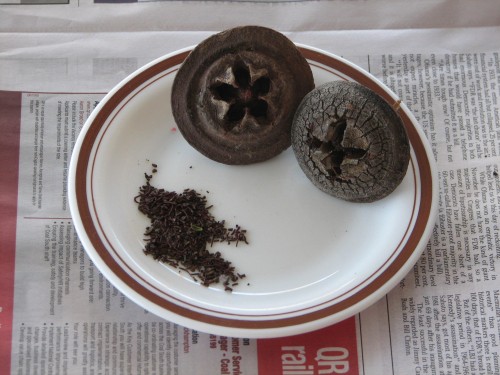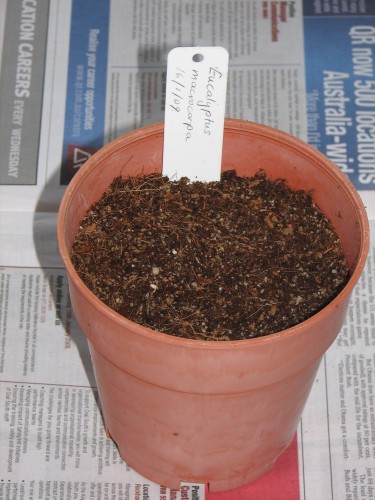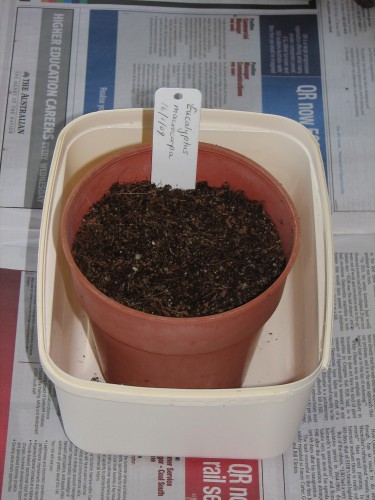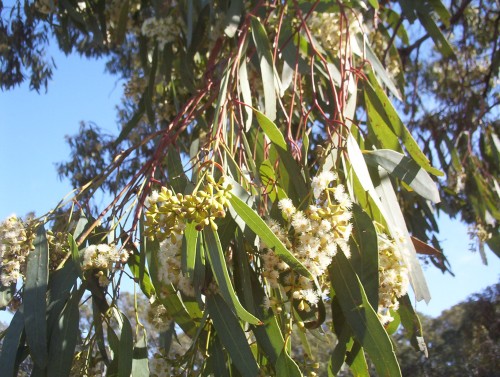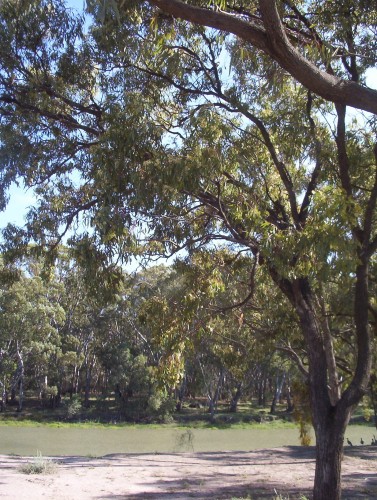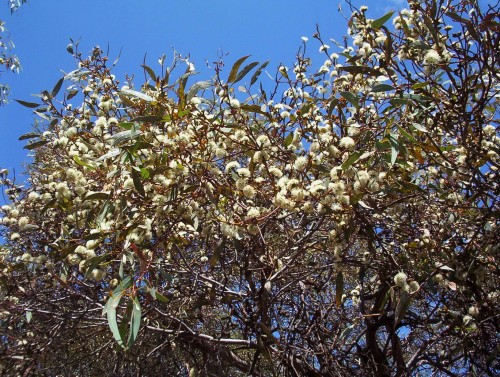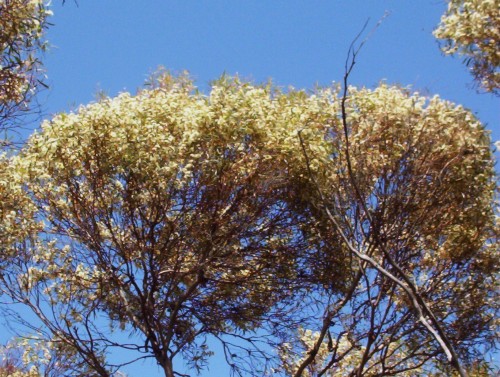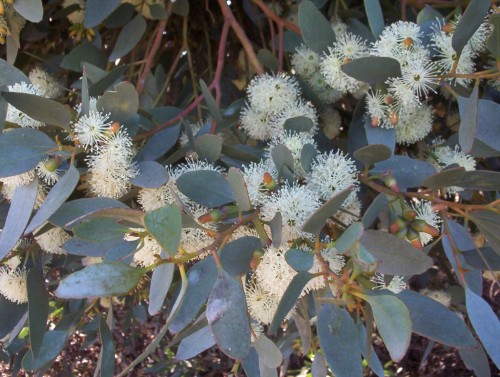Growing Eucalyptus From Seeds
The Eucalyptus gum nuts (woody fruits) that are left on the tree after it has flowered, contain seed and chaff. When they have ripened some fall off naturally, or are nipped off by parrots and lorikeets.
These gum nuts can be collected and placed in a container or paper bag and left in a dry place until the valves in the top of the nut open and release the seed and chaff.
Some trees hold the nuts way past the first year. It is always best to take the older nuts as then you will be sure that the seed is mature and will germinate.
Some species of Eucalypt do not set much seed in the nuts, and some seed will not germinate.
Some easy ways to germinate the seeds:
Containers
Use a clean pot, about 100-150 mm across the top, with holes in the bottom.
Seed raising mix
You can buy seed raising mix from garden centres and some large supermarkets. It keeps, so just store it in a clean container, with a lid.
You can make your own with clean (washed) coarse sand and cocopeat.
- The cocopeat is available from garden centres and supermarkets. The block is the size of a house brick and is made from coconut husks.
- Half fill a 9 litre bucket with water, place the cocopeat brick in the water and leave it to absorb the water and expand and become moist and crumbly.
- Use about two parts peat and one part sand mixed together.
Sow the Seed
- Fill the pot to within 2 cm of the top of the pot and tap the pot on the table to settle the mix.
- Press the surface of the mix lightly to make it smooth.
- Sprinkle a pinch of the seed/chaff over the surface of the mix.
- Sprinkle a very light layer of the seed raising mix over the seed.
- Label the pot with the name of the species and the date.
- Labels can be made from the lid of an icecream container, or pop sticks.
Caring for the pot of seeds
- Stand the pot in a container like an icecream container and fill the ice cream container with water.
- The water will soak up through the seed raising mix and wet the surface of the mix and the seeds.
- The surface of the mix should be kept moist, not soggy, so once the moisture is there, keep the water level in the ice cream container at about 3cm.
(You could use a fine spray from a hose to water. Be careful that it is fine so that you do not wash the seed out of the pot.)
- Keep the pot in a sheltered, well lit spot, out of direct sun if the weather is hot.
- Seed should begin to germinate in 2-4 weeks, depending on the air temperature.
- When the seed has germinated, keep the water level in the icecream container quite low, or remove it altogether, keeping the potting mix just moist.
Eucalyptus largiflorens(Black Box)
This is an attractive small to medium tree, 10-20 metres high by 8-15 metres wide, with large clusters of cream flowers loved by bees and Honeyeaters. Black Box are known as good honey producing trees. These trees are seen on the banks or rivers and lakes in Queensland, New South Wales, Victoria and South Australia, usually in low lying areas where water once lay. This stimulates the seed germination and is why stands of these trees are often seen in the middle of nowhere. If lakes or rivers have flooded, these seed capsules are left washed at the highest point at that time which may never be reached again. The soils in these areas are clays to heavy loams, which of course makes them ideal for such soils in home gardens, where the soils are poorly drained or alkaline. These trees are also resistant to heavy frost. Flowering is between August and January.
I can’t believe that the proposed name change for this tree is ‘Symphymomyrtus’ ie. the plant is possibly called Symphymomyrtus largiflorens! I haven’t kept up with all the Eucalyptus name changes, except for Corymbia ficifolia (Eucalyptus ficifolia, Western Australian Flowering Gum).
This photo was taken on the banks of the Murrumbidgee at Hay, in NSW.
Mallee in Flower
I was working in the Nursery this morning and could hear what I thought was the neighbour’s air conditioner. It was there in the background but I could not track the other noise that was there. When I looked up above my head I saw it. There were hundreds of bees in the canopy of the tree because it was smothered in flowers.
I love our local mallee trees. Against all odds they put on beautiful new new leaf growth and flower prolifically when everything else has ‘quietened down’ for the hot summers we have here. We seem to have three different species and they flower consecutively. If I was into bee keeping, it would be worth while having hives here for about three months. These are moderately fast growing plants suitable for limestone soils.
Eucalyptus platypus (Moort)
Eucalyptus platypus is a Western Australian tree 4-10 metres high by 5-10 metres wide. It flowers from spring through to autumn, the flowers being creamy yellow as in the varieties growing around here, to greenish yellow. Apparently there is a red form also which is rare but would be beautiful given how floriferous this plant is.
This tree is fast growing and particularly suited to heavy soils. It tolerates some water logging and is hardy to drought and most frosts. It is highly resistant to smog. The trees respond well to pruning and coppicing. They have many uses including shelter belts and wind erosion control. The foliage grows low down on the plant giving the impression of a large shrubby tree. This aspect makes it a great plant for wind breaks. It is also a good plant for bee keepers.
Eucalyptus platypus (Moort)
It is named Eucalyptus platypus because the flower stem and buds resemble the foot and claws of this Australian Native animal.

